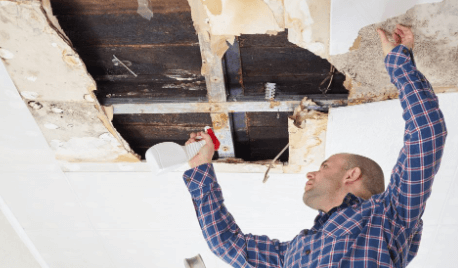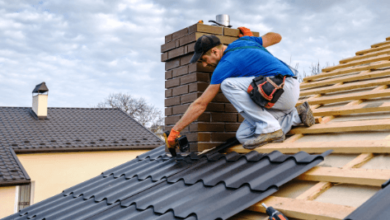Why Mold Testing Is Important For Your Home

Mold testing is an important step in ensuring the safety and good health of your family.
Not only can mold cause unsightly damage to your home, it can also be a health hazard if left unchecked.
It’s important to know what types of mold are present in your home, so you can take the necessary steps to protect yourself and those you love from potential harm.
In this article, we’ll cover the different types of mold testing available, how to identify signs of mold growth, and the benefits of regular testing.
With this knowledge, you’ll have the power to take control of your home environment and ensure that it remains safe for all who enter!
Understanding the Health Risks of Mold
It’s critical to comprehend the potential health hazards that may be lurking in your environment, so you can take steps to protect yourself and your loved ones.
Mold is one of these risks that should not be overlooked or taken lightly. Exposure to mold has been linked to a variety of serious health effects, including respiratory illnesses, allergies, asthma attacks, and even skin irritation. Those with pre-existing conditions such as allergies or asthma are especially at risk for developing complications from exposure to mold.
Managing allergies requires being proactive and taking steps like testing for mold in order to detect any hidden allergens that may be present in the environment. Removing any identified sources of mold can significantly reduce allergy symptoms and provide relief from unpleasant reactions.
Mold spores are microscopic particles found naturally almost everywhere in both indoor and outdoor environments. Even when not visible, small amounts of airborne mold spores can still cause allergic reactions or respiratory problems if inhaled by susceptible individuals.
That’s why it’s important to identify the types of mold present so proper remediation techniques can be used to eliminate them from your home or office environment quickly and effectively.
Identifying the Types of Mold
Identifying different types of fungi is key – to see what’s lurking, and whether it’s hazardous. When it comes to preventing mold in the home, recognizing the symptoms can help you identify possible mold growth before it becomes a larger issue. Mold affects everyone differently, so it’s important to know which type of fungus may be present in your home and how best to address it.
The most effective way to identify the type of mold is through testing. There are several methods that can be used for testing, such as surface sampling or bulk sampling.
Surface samples involve collecting a sample from an area that shows visible signs of mold growth and sending it off for analysis.
Bulk sampling involves taking a sample from an area where there is suspected hidden contamination and sending that off for laboratory examination.
Knowing which type of test to choose will depend on specific factors such as the size of the affected area or if there are any other potential sources of contamination nearby.
No matter which method you use, having accurate information about what kind of mold you have in your home is crucial for getting rid of it safely and efficiently.
Understanding the Different Types of Mold Testing
Knowing what kind of fungi lurks beneath the surface is crucial; testing can help you uncover it. Understanding the different types of mold testing is an important preventive measure to take when ensuring your home’s air quality.
Air samples, surface samples, and bulk samples are all popular forms of mold testing that can be done in order to check for levels of airborne spores and moisture content. Air sampling requires a technician to collect a sample of air from inside or outside your home with special equipment; this test will assess how much mold is in the air.
Surface sampling involves taking swabs or tape lifts from surfaces within your home such as walls, carpets, furniture, etc.; this method provides information about what type of mold may be present on those surfaces.
Bulk sampling involves collecting materials like insulation or drywall which gives a better overall idea of what kinds of molds are present throughout your house.
Knowing the different types of mold testing can ensure that you get an accurate assessment and protect yourself and your family against any potential health risks associated with high levels of indoor fungi.
Knowing the Signs of Mold
Recognizing the telltale signs of fungi is key to keeping your family safe – and a figurative breath of fresh air! It’s important to know what to look out for when trying to identify mold in your home.
Some common symptoms include musty odors, discolored surfaces, surface staining, visible growth and condensation on windows or walls. Mold can also cause health problems such as allergies, asthma attacks, coughing or wheezing. If you experience any of these signs in your home, it may be time to consider mold testing.
Taking preventative measures against mold growth can help stop it before it starts. Keeping an eye out for water damage or plumbing issues that could lead to moisture buildup and making sure humidity levels are at normal levels will greatly reduce the risk of mold developing in your home.
Regularly checking insulation and vents for cracking is also an important step towards preventing the spread of fungal spores around your home. Knowing the signs of mold will help you identify if there is a problem early on, so you can take proper action before more serious issues occur.
The Benefits of Regular Mold Testing
Staying on top of potential mold growth is essential for ensuring the health and safety of you and your family, so regular mold testing is a must. Taking proactive preventive steps like controlling humidity levels can greatly reduce the risk of mold in your home.
Having an expert come to test for any sign of the harmful fungus can not only detect existing problems but also provide peace of mind that your home environment is safe. Mold testing helps identify any issues early, which limits further damage and makes it easier to eradicate.
Regular testing allows you to stay informed about the condition of your home, enabling you to take appropriate action quickly if there are any signs of contamination or other hazards. By having routine inspections, you can be sure that your environment remains healthy and free from hazardous toxins that could affect your wellbeing.
Moving forward with taking action if mold is detected will help ensure that both you and your family’s safety is always prioritized.
Taking Action if Mold is Detected
Realizing the potential danger of mold is key, so if it’s detected, don’t just sit there – take action!
The first step in taking action is to find out where the mold is coming from. This will help you determine what you need to do in order to prevent further contamination and mitigate any damage that may have already been done. Here are a few ways to detect sources:
* Inspect your home for water leaks or standing water.
* Install a moisture meter on walls or other surfaces that come into contact with humidity, such as bathroom showers and windowsills.
* Check for visible patches of black or green mold growth around windows and under sinks.
Once you’ve identified the source of the problem, it’s time to work on getting rid of it.
Start by removing any objects that are visibly affected by the mold, such as carpeting or furniture. Then tackle the underlying cause by taking steps like sealing up cracks and gaps in walls, replacing insulation, and making sure all pipes are properly sealed off.
Finally, investing in air purifiers can help improve indoor air quality while preventing mold spores from spreading throughout your home.
Conclusion
You now understand the importance of mold testing in your home. Not only do you know the health risks associated with mold, but you also know how to identify different types of mold and the signs that can indicate its presence.
Regular mold testing is a great way to protect your family’s wellbeing and ensure that any problems are dealt with swiftly and safely. Taking action if mold is detected will help keep your home healthy and happy for years to come!
So don’t delay – make sure to schedule regular mold testing today for peace of mind, protection, and preservation.




